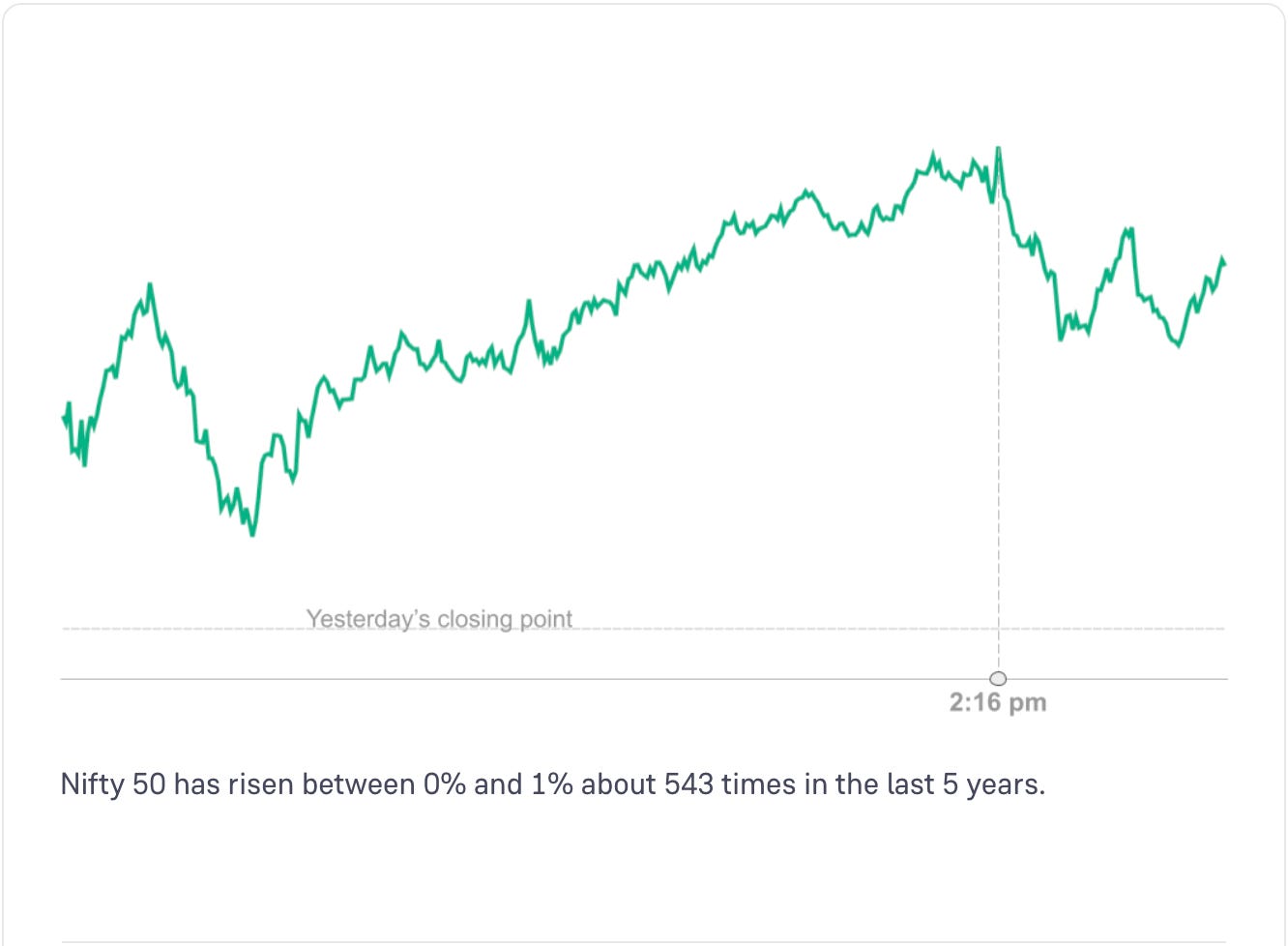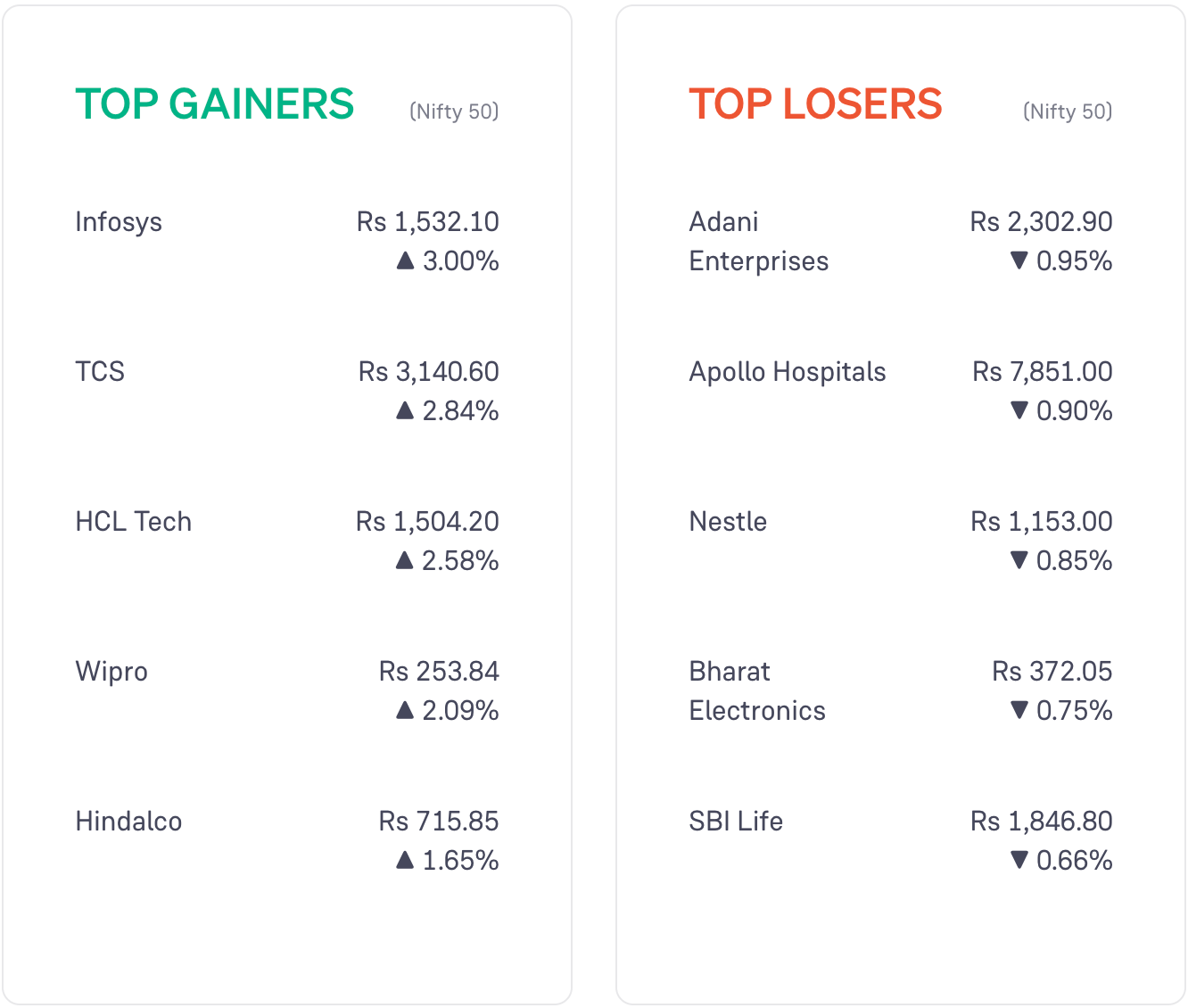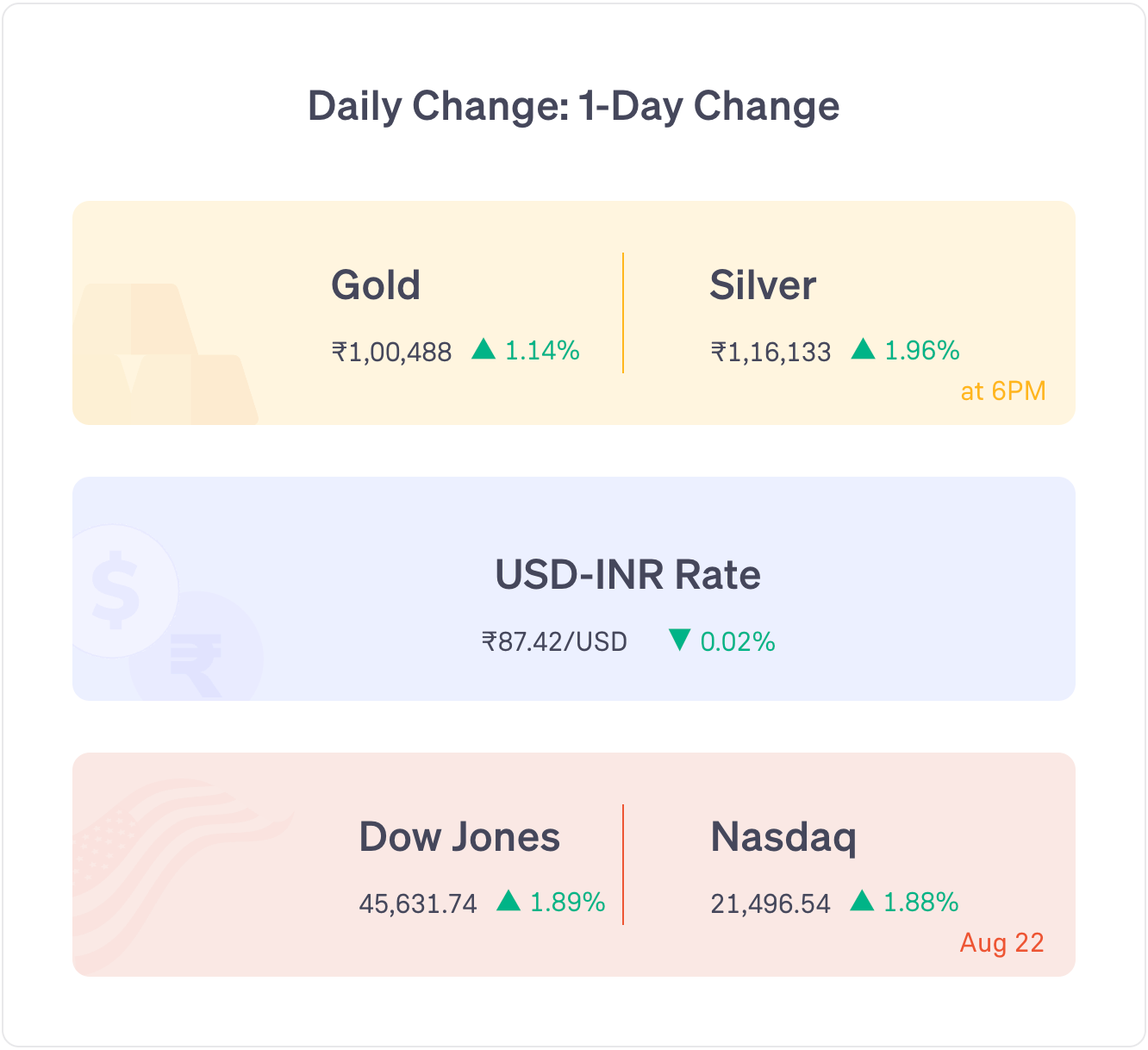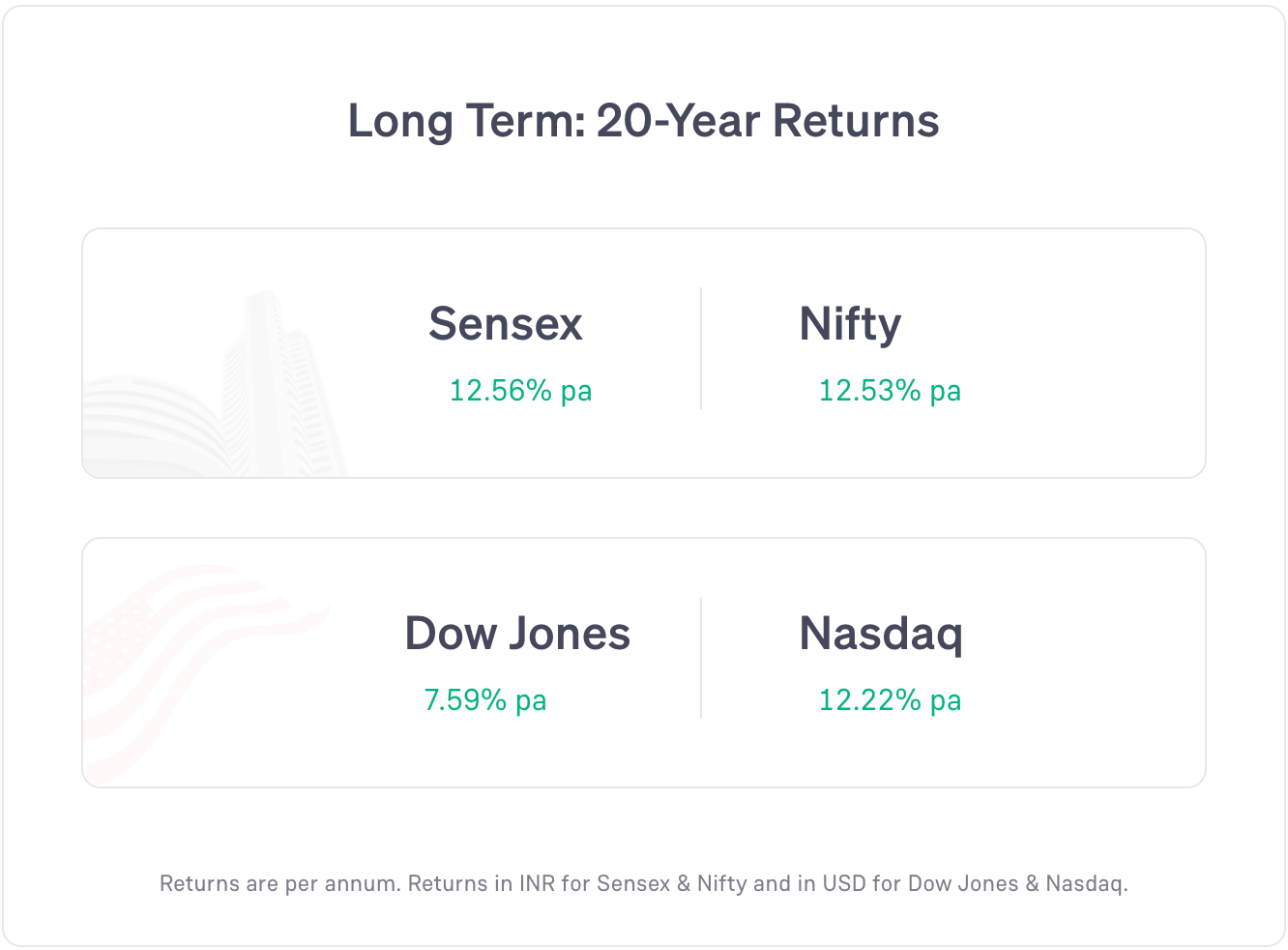OYO to file for IPO, IndusInd Bank's new MD and CEO, & more — Daily Digest
Monday, 25 August 2025
Markets opened above Friday’s closing point.
Nifty 50 rose and closed in green. This was mainly due to positive sentiments after the US Fed Chair's speech on Friday signaling possible US rate cuts in September.
IT stocks and realty stocks rose the most today. Media stocks and PSU bank stocks fell the most.
Global markets: US markets and Asian markets rose. Most European markets were flat (as of 6 pm IST).
News
China has agreed in principle to reopen the Shipki-La border trade route in Kinnaur, Himachal Pradesh, which was closed in 2020.
India’s crude oil imports fell 4.3% year-on-year to 18.56 million metric tons in July. This is the lowest level of crude imports of India since Feb 2024.
OYO is planning to file its Draft Red Herring Prospectus (DRHP) with SEBI in November, with a valuation of $7 billion to $8 billion. This is as per various media reports.
Stocks Updates
Coal India: signed an MoU with the Madhya Pradesh government and MP State Mining Corporation to jointly explore and develop critical and other minerals in the state.
Mazagon Dock: denied media reports of Rs 70,000 crore submarine talks with Thyssenkrupp and clarified no such negotiations have taken place.
NHPC: will commission the remaining capacity of its 300 MW Karnisar Solar Project in Bikaner, Rajasthan by 30 Sept instead of 31 Aug. Currently, 214.28 MW capacity is operational.
NTPC Green: declared 50 MW solar capacity in Bhuj, Gujarat operational in a project under a step-down subsidiary of the company’s joint venture with ONGC.
IndusInd Bank: Mr. Rajiv Anand has taken charge as the new MD & CEO of the company from 25 Aug for a 3-year term. Before this appointment, he was the Deputy Managing Director at Axis Bank.
Word of the Day
Capital Adequacy Ratio (CAR)
It shows how much capital a bank has to cover possible losses from its loans or investments
It is a metric of a bank’s financial health.
For this, a bank’s capital is compared to its risk weighted assets — meaning their loans or investments, adjusted for risks.
In India, the RBI mandates that all scheduled commercial banks maintain a CAR of at least 9%. Within this, public sector banks must maintain 12%.
This is decided to ensure that banks do not take excessive risks and remain financially safe.
A higher CAR means a bank is comparatively safer and will be able to handle financial shocks.
6 Day Course
Theme: why SIP works
Day 1: Monday
The number of SIP investors has consistently grown to newer heights over the last few years.
In this week’s course, we will try to understand why SIP exactly works for investors — and when it does not work.
SIPs or Systematic Investment Plan is a method of investing.
Most people think it is an investment option itself. Many people speak of SIPs and mutual funds interchangeably.
SIPs allow you to automate investing — you set the asset to invest in (a mutual fund, for example), the frequency (monthly, weekly, etc), and the amount to invest.
Example: invest Rs 10,000 in XYZ mutual fund on the 6th of every month.
Mutual funds are not the only asset class you can do SIPs in. You can also start an SIP in a stock, ETF, etc.
In fact, an SIP in fixed deposits is also possible (it is called recurring deposit or RD).
Featured Question
Q. “If Trading account is for buying and selling and Demat is like warehouse to store, then can a user have only have demat without trading account, like in case of MF I assume, trading account is not necessary, so only warehouse, then where is the MF traded, when a user buys it in Direct form?”
Technically, it is possible.
If you’re investing in mutual funds only, a demat account can exist without having a trading account (for stocks investing).
Practically speaking, this mostly does not happen.
This is because most platforms that offer mutual funds also offer stocks, ETFs, etc — so the trading account gets opened simultaneously even though you may not use it.
When you invest in a mutual fund, the money goes to the mutual fund company and they allocate mutual fund units to you in return.
When you withdraw money from a mutual fund, the mutual fund company takes your mutual fund units and gives you money back.
Did you like this edition?
Leave a feedback here!






